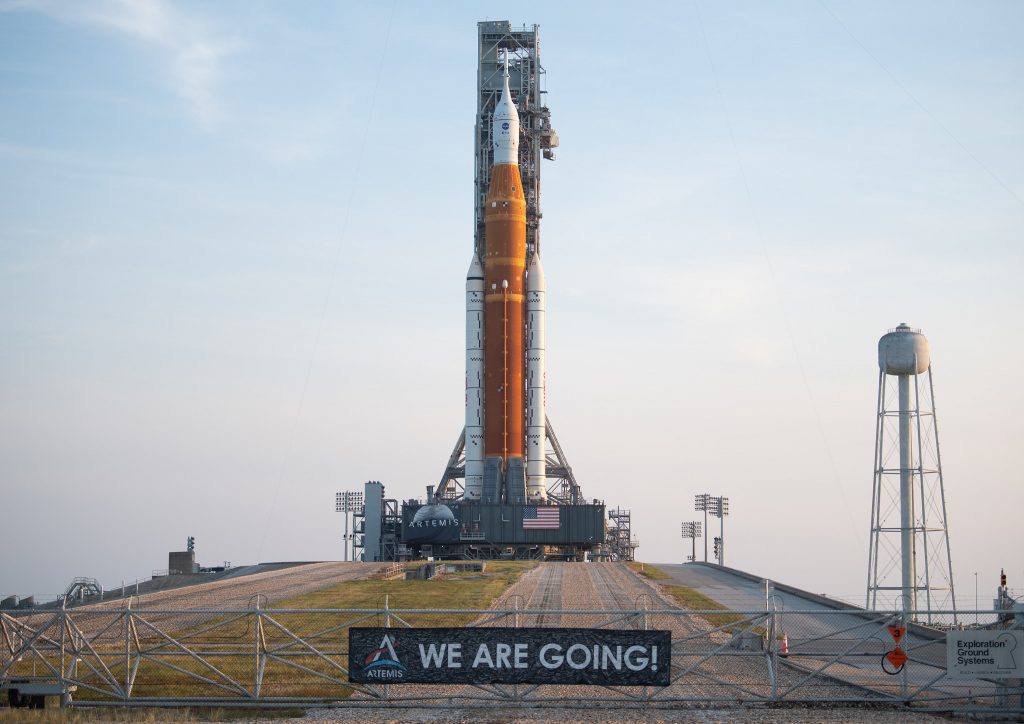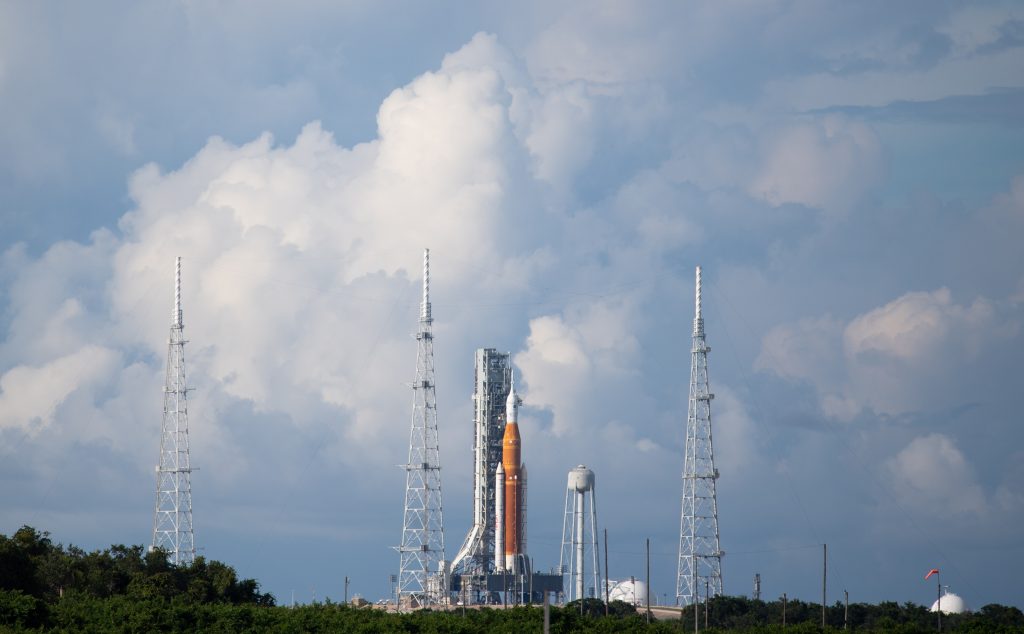Overnight engineers evaluated data from lightning strikes to the lightning protection system at Launch Pad 39B that occurred yesterday. They confirmed the strikes were of low magnitude and had no impacts to Space Launch System, Orion, or ground systems.
Meteorologists with the U.S. Space Force Space Launch Delta 45 predict an 80% chance of favorable weather conditions at the beginning of the two-hour launch window that opens at 8:33 a.m. EDT Aug. 29, with a 60% change of favorable weather conditions toward the later part of the window. The primary weather concern for the two-hour launch window remains scattered rain showers. The weather guidelines for NASA’s Artemis I flight test identify conditions to launch the agency’s Space Launch System and Orion spacecraft.
Overnight teams also powered up the Space Launch System rocket’s core stage, charged Orion and core stage batteries, and conducted final preparations on the umbilicals. A pre-launch walkdown are continuing at the launch pad this morning. Teams will continue working their way through the countdown today, including powering up the interim cryogenic propulsion stage, conducting planned health checks on Orion systems,
Live coverage of tanking operations will begin at midnight on NASA television, the agency’s website, and the NASA app. Full launch coverage begin at 6:30 a.m. EDT on NASA Television and the agency’s website, as well as YouTube, Twitter, Facebook, LinkedIn, Twitch, Daily Motion, Theta.TV, and the NASA app.
The uncrewed flight test will test SLS and Orion as an integrated system, demonstrating the performance of the rocket and testing the spacecraft’s capabilities as it journeys about 40,000 miles beyond the Moon over the course of about six weeks.
The first in an increasingly complex series of missions, Artemis I will pave the way for long-term lunar exploration, providing the foundation for extending human presence to the Moon and beyond.



